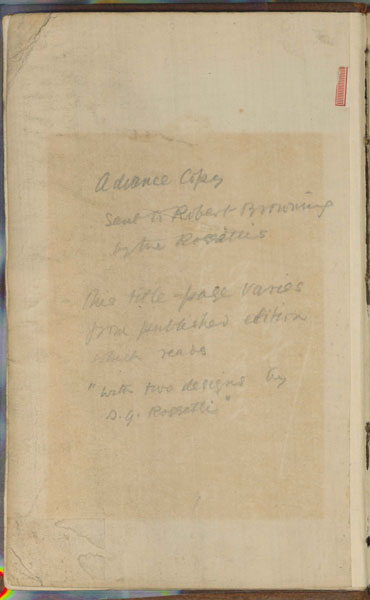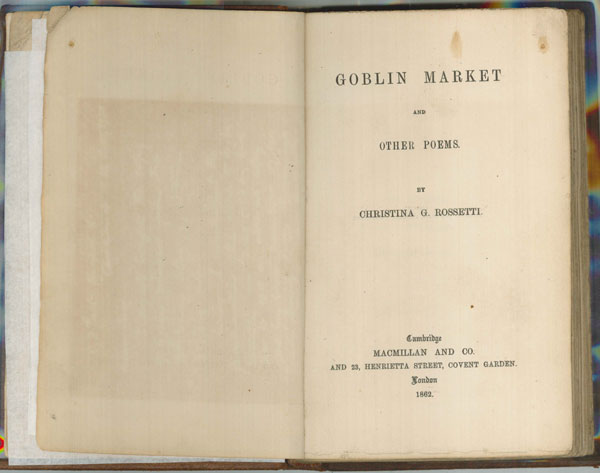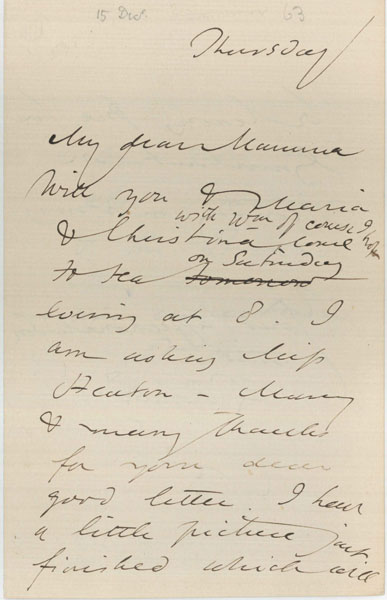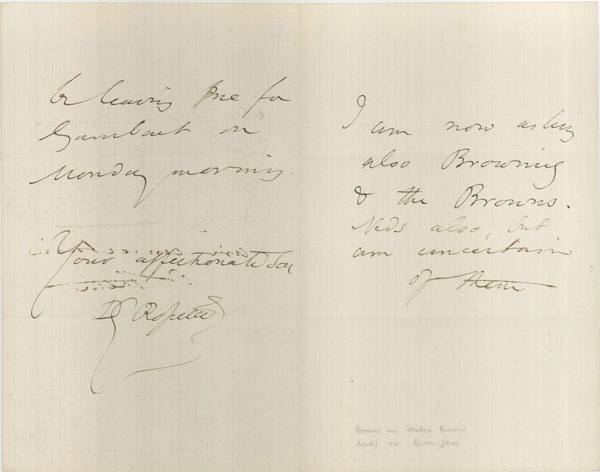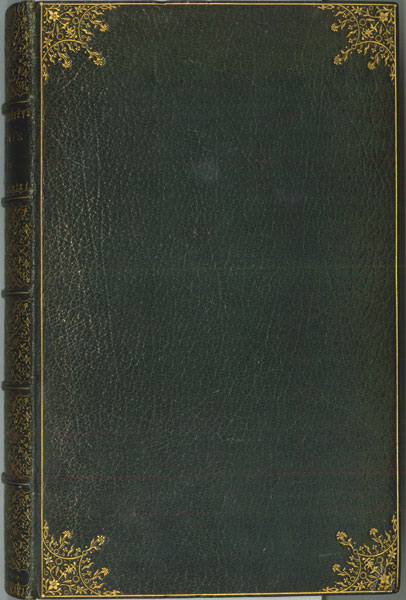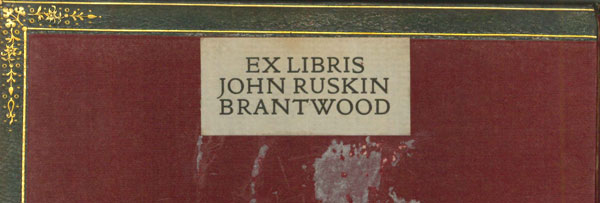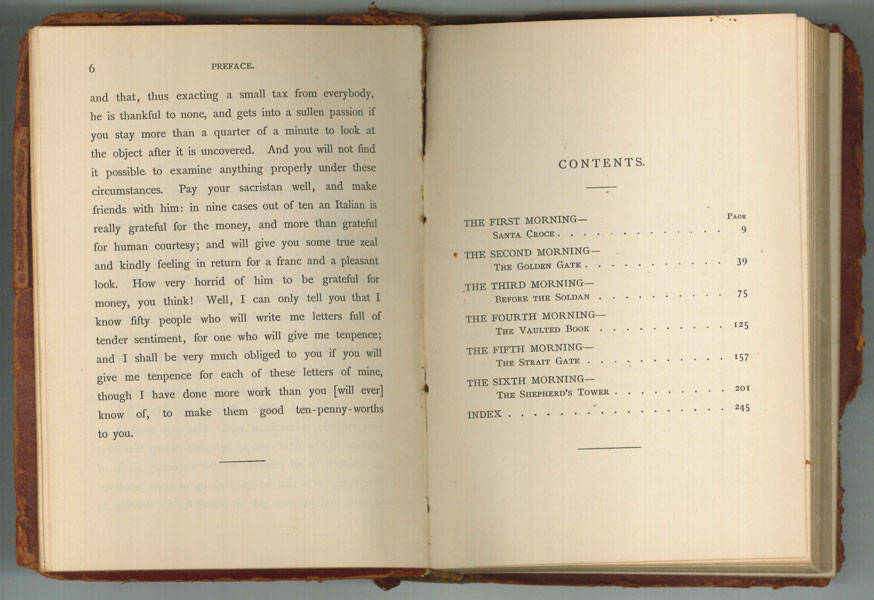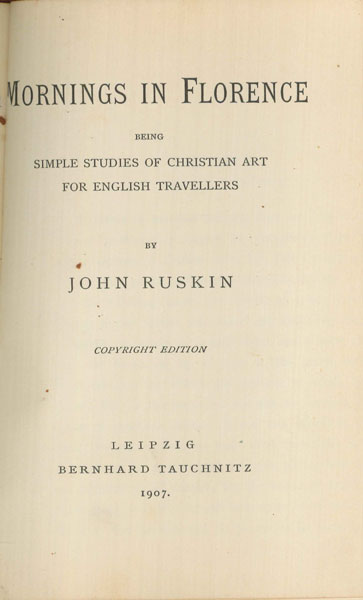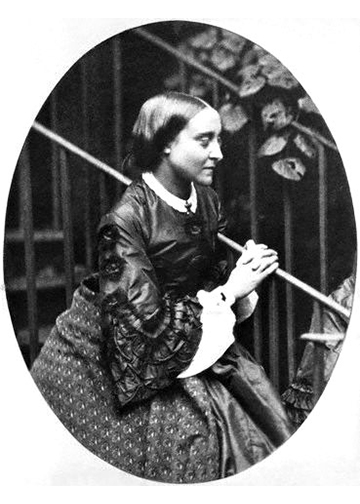By Melinda Creech
Graduate Assistant, Armstrong Browning Library
John Ruskin was the leading English art critic of the Victorian era, an active art patron, an accomplished draftsman, and a gifted water-colorist and painter. Several of the letters owned by the Armstrong Browning Library mention topics related to art.

Letter from John Ruskin to Dante Gabriel Rossetti. [1855]
In this brief note to Dante Gabriel Rossetti, [1855], Ruskin says: “I like my picture[s] & mightily—but want you to order the frame and try any experiment you like on it thoroughly.” It is not possible to clearly determine which picture or pictures Ruskin is talking about. He bought several paintings from Rossetti and from Elizabeth Siddal, Rossetti’s wife.
*****

Letter from John Ruskin to Alfred Harris. 6 May [1864]. Page 1.

Letter from John Ruskin to Alfred Harris. 6 May [1864]. Page 2 and 3.

Letter from John Ruskin to Alfred Harris. 6 May [1864]. Page 4.
In this letter to Alfred Harris, Ruskin recounts a humorous conversation he had overheard about himself while riding in a carriage. In the conversation Ruskin was described as “cracked,” and it was conjectured that “All them genius’s have something wrong about them you know.” Ruskin then tells Harris that he has “been looking for the pretty Princess portrait I told Miss Ella of” with “the blue eyes.” He said he had purchased it and sent it to Mr. Harris for Ella, possibly, his daughter.
*****

Letter from John Ruskin to Albert Goodwin. [ca. 1870]. Page 1.

Letter from John Ruskin to Albert Goodwin. [ca. 1870]. Page 2.
In this letter Ruskin critiques Goodwin’s painting, offers to buy it at a reduced price, and asks for it to be loaned to him for a lecture. Goodwin was a close friend and protégé of Ruskin. Although he describes the painting as beautiful, Ruskin critiques Goodwin’s perspective on his drawing of pots, his “blundered dog,” “slurred arabesques,” and “lost curls of ample hair” in the painting. Although the painting is not named, the descriptive clues suggest a possible identification.
*****

Letter from John Ruskin to Sidney Colvin. 19 March 1873. Page 1.

Letter from John Ruskin to Sidney Colvin. 19 March 1873. Page 2.
Sidney Colvin, a scholar of Trinity College, Cambridge, became a fellow of his college in 1868. In 1873, when this letter was written, he was Slade Professor of Fine Art, and was appointed to the directorship of the Fitzwilliam Museum the following year. Ruskin himself was appointed the first Slade Professor of Fine Art at Oxford University in August 1869, and continued to teach at Oxford until 1879. He taught there again from 1883-1884. In this letter Ruskin tells Colvin that “that book of drawing will be left for some days yet in Mr. Reid’s charge—and I have asked him to let you look over it at your leisure, whenever you wish.” George William Reid was curator of the Print Room in the British Museum.
*****

Letter from John Ruskin to Sidney Miles. 24 September 1879.
In this faded letter Ruskin informs Miles that his engagements prevent him from the verification of pictures. However, he submits “this general recommendation—never to buy pictures unless you enjoy them—and if you enjoy them—never to mind whose they are.”
*****
![Letter from John Ruskin to [William] Kingsley. 18 February 1886. Page 1.](https://blogs.baylor.edu/armstrongbrowning/files/2016/10/Ruskin-to-William-Kingsley015-1nh5387-658x1024.jpg)
Letter from John Ruskin to [William] Kingsley. 18 February 1886. Page 1.

Letter from John Ruskin to [William] Kingsley. 18 February 1886. Page 2.
Ruskin thanks Kingsley for loaning him the delightful sketchbook belonging to Kingsley’s wife, saying that “the light and colour of some bits [of her landscapes] were exactly true and the character perfect.” William Kingsley, Rector of South Kilvington, near Thirsk, was a close personal friend of both John Ruskin and J. M. W. Turner. An account of their association can be found in Yorkshire Remembrances, by Marmaduke Charles Frederic Morris (1922). Kingsley lived to be 101; his wife died the following year at the age of ninety. Mrs. Kingsley’s sister was married to Tom Taylor, the dramatist and editor of Punch.
*****
![Letter from John Ruskin to Tom Taylor. [Undated].](https://blogs.baylor.edu/armstrongbrowning/files/2016/10/Ruskin-to-Taylor014-1bq7kpb-673x1024.jpg)
Letter from John Ruskin to Tom Taylor. [Undated].
Although the signature of this letter is excised, the heading and the handwriting suggest it to be Ruskin’s. The letter is Ruskin’s refusal to buy the sketches that Taylor has offered. He says:
I had much rather give you ten pounds for any body in distress, than buy what I do not want—I have bought sketches like them —or better—for fifteen or twenty shillings—in the old times, and would not buy many, then.—at first rate thing is always worth—what one must give for it—a second rate thing—worth only what it is worth however the market may be—
*****
![Letter from John Ruskin to [Unknown]. [Undated].](https://blogs.baylor.edu/armstrongbrowning/files/2016/10/Ruskin-to-Unk-14a52wp-807x1024.jpg)
Letter from John Ruskin to [Unknown]. [Undated].
In this letter to an unknown correspondent, Ruskin gives drawing instructions to a student. He says:
“Begin any other of the pencil subject like that you have just done, which seems easiest to you. … Practice, at home, a quantity of pencil shading thus [six columns of lines drawn back and forth from left to right] And lines, thus, straight and thick and upright lines [eleven diagonal lines that appear to be smudged at the bottom and seven straight lines] thus.”
Save
Save
Save
Save
Save
Save
Save
Save
Save











![Letter from John Ruskin to [William] Kingsley. 18 February 1886. Page 1.](https://blogs.baylor.edu/armstrongbrowning/files/2016/10/Ruskin-to-William-Kingsley015-1nh5387-658x1024.jpg)

![Letter from John Ruskin to Tom Taylor. [Undated].](https://blogs.baylor.edu/armstrongbrowning/files/2016/10/Ruskin-to-Taylor014-1bq7kpb-673x1024.jpg)
![Letter from John Ruskin to [Unknown]. [Undated].](https://blogs.baylor.edu/armstrongbrowning/files/2016/10/Ruskin-to-Unk-14a52wp-807x1024.jpg)












